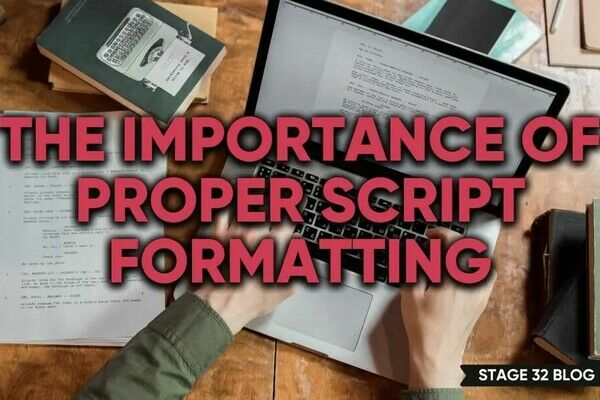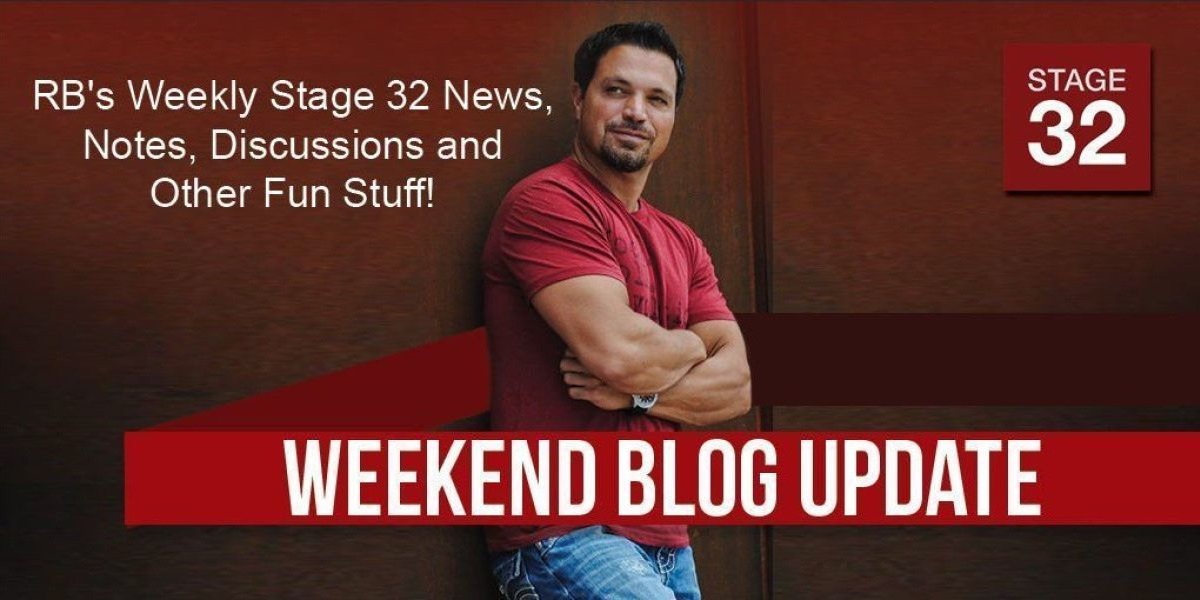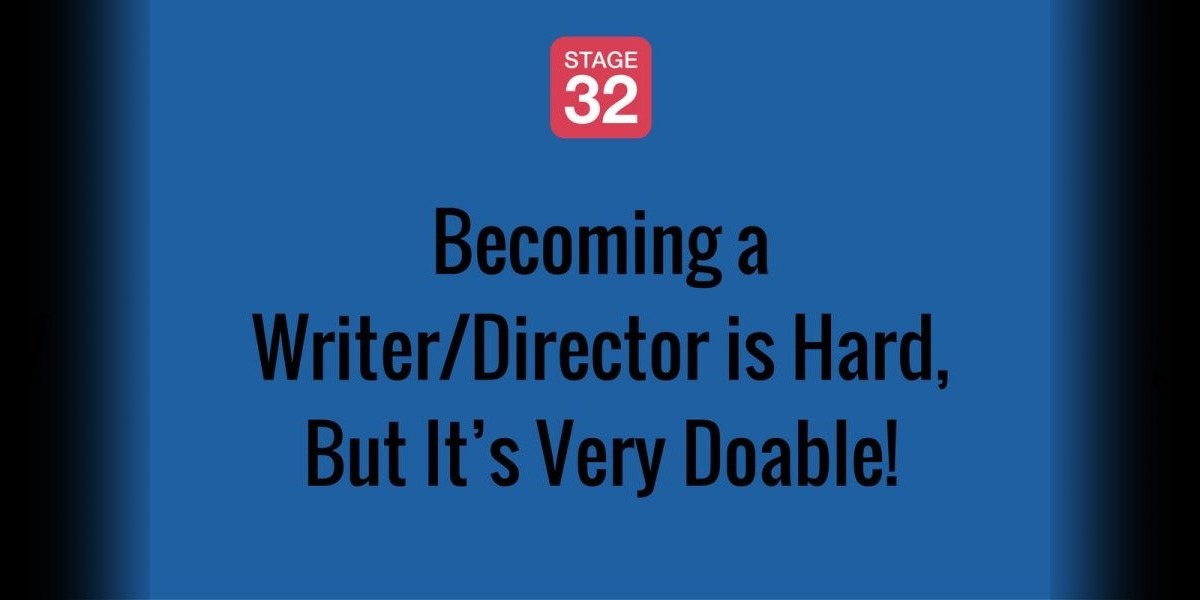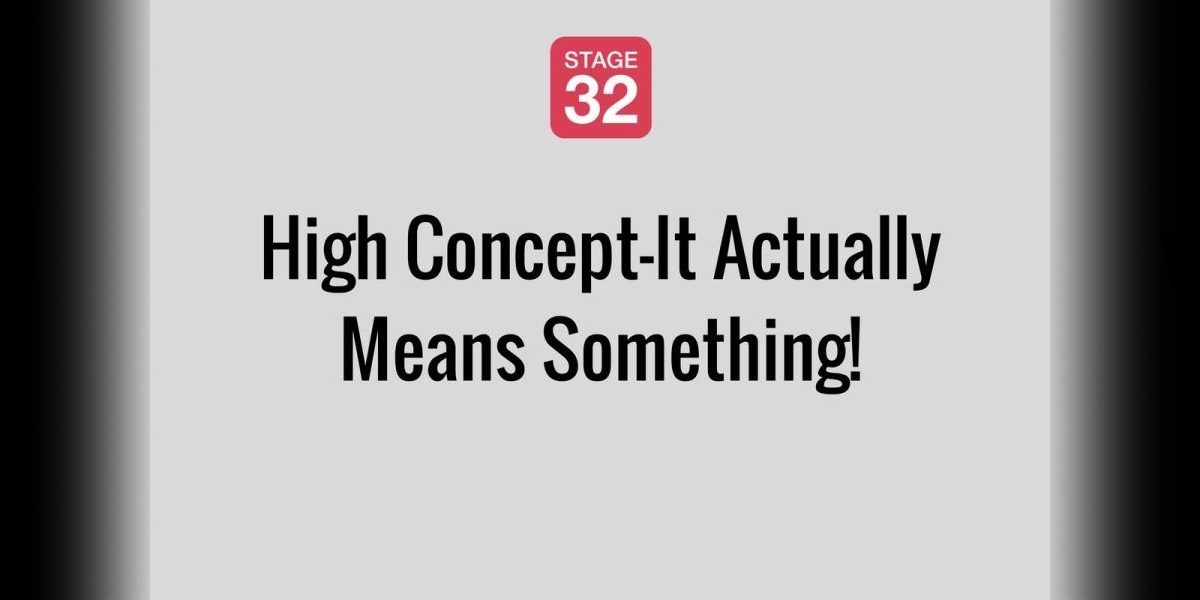High Concept—It Actually Means Something!
As writers, we have all come up against the agent, publisher, studio hack, or fellow writer who, when asked to give feedback on our story retorts, “Yeah, good idea, but … it needs to pop more. There’s no high concept.” Sigh, and what the heck does that mean? What are you supposed to do with that? People throw this phrase around like the definition is common knowledge, but when asked to explain their sorry selves, these same people only deliver clichés, like:
- It’s your story’s hook.
- It’s what’s fun about your story.
- It’s your story’s heart.
- It’s your story as a movie one-sheet.
- It’s the essence of your premise.
And so on …
All of these have some truth to them. All of these speak to the idea of a high concept, but none of them really explain the darn thing. 'High concept' has become a term d’art that everyone uses and that no one really understands.
After much hair pulling, moaning, and sleepless nights analyzing this idea, I have stumbled upon an elegant construct that I think will both define the term accurately, but also give writers a tool for testing their ideas to quickly see if there is a high-concept component present.
High concept applies to any idea: motorcycle design, toothpaste, cooking, comic books, novels, movies, the list is endless. High concept is about essence; that visceral thing that grabs you by the scruff of the neck and doesn’t let go. From a writing perspective, a story idea that is high concept captures the reader’s or viewer’s imagination, excites their senses, gets them asking “what if?” and sparks them to start imagining the story even before they have read a word. High concept drives the commercial book business, as well as the film and television industries.
A high-concept idea has the following seven qualities.
- High level of entertainment value.
- High degree of originality.
- High level of uniqueness (different than original).
- Highly visual.
- Possesses a clear emotional focus (root emotion).
- Targets a broad, general audience, or a large niche market.
- Sparks a “what if” question (Excerpted from Anatomy of a Premise Line: How to Master Premise and Story Development for Writing Success. Focal Press, 2015).
Let’s look at each of these to get a better idea of what they mean:
High-level of entertainment value: This can be elusive. Defining 'entertainment value' is like trying to define pornography; it’s in the eye of the beholder. Simply put, you know if something is entertaining, or not, if it holds your attention and sparks your imagination. If you are distracted easily from the idea or interested purely on an intellectual basis, then it is safe to say that the idea may be interesting, engaging and curious, but not entertaining.
High degree of originality: What does it mean to be original? Some common words associated with originality are: fresh, new, innovative, novel (no, not a book). Think of originality as approach-centric. The idea may be centered in a familiar context, but the approach (original take) offered to get to that familiar context has never been used before, for example:
Frankenstein (1994, TriStar Pictures): Familiar idea: Evil monster terrorizes the humans. Original take: The monster and humans switch moral ground and the humans terrorize the monster.
Toute une vie (And Now My Love, 1974, AVCO Embassy Pictures: Familiar idea: Boy meets girl. Original take: We see all the generations that led to the boy and girl being born, their love affairs, lives and all the things they experience that make them who they become as adults; the lovers don't meet until the end of the movie, rather than the beginning.
So, originality is more about finding new ways to present the familiar, rather than inventing something new from scratch.
High level of uniqueness: Whereas originality is about approach and fresh perspective, uniqueness is about being one-of-a-kind, first time and incomparable. Being original can also involve uniqueness, but being unique transcends even originality.
Finnegans Wake (novel, James Joyce): Conventional Context: Episodic, slice-of-life vignettes of HCP, ALP and other characters. Unique take: One-of-a-kind writing style never before used in modern fiction.
Sallie Gardner at the Gallop (1880, Eadweard Muybridge): Conventional Context: No precedent! Unique take: Believed to be the first motion picture exhibition anywhere.
Highly visual: high-concept ideas have a visual quality about them that is palpable. When you read or hear about a high-concept idea, your mind starts conjuring images and you literally see the idea unfold in your mind. This is why high-concept books make such good films when adapted. Books with cinematic imagery are almost always high-concept stories.
Possesses a clear emotional focus: Like imagery, high-concept ideas spark emotion, but not just any emotion, usually it is a primal emotion: fear, joy, hate, love, rage, etc. There is no wishy-washy emotional engagement of the reader. The involvement is strong, immediate and intense.
Possesses mass audience appeal: The idea appeals to an audience beyond friends and family. The target market is broad, diverse, and large. Some ideas are very niche, appealing to a specific demographic, but this is usually a large demographic. High-concept ideas are popular ideas, mass ideas and often trendy ideas.
Usually born from a 'what if' question: What if dinosaurs were cloned (Jurassic Park)? What if women stopped giving birth (Children of Men)? What if Martians invaded the Earth (War of the Worlds)? High-concept ideas are often posed first with a 'what if' scenario and then the hook becomes clear. The hook is that part of the high concept that grabs the reader. It is often the one piece of the idea that is the original concept or the unique element. In the three examples just given, each of them has a clear hook that leads to a high-concept premise line (the 'premise line' will be the subject of a later post).
When a story has one or more of these qualities, then it can say it is high concept. The more the merrier. High concept is not a single trait or quality, it is a continuum of qualities that every story has; some more, some less. In that sense, every story is high concept, the question is, where is it on the continuum? When the idea of high concept is put in the context of these seven qualities, it becomes easier to see that commercial film/TV ideas, or literary ideas, often have a clear line of demarcation from 'noncommercial' content. That line is the high concept.
"So, what?" you ask. "It is what it is—right? Why does it matter that I know the degree of high concept of my story?" Fair question, but, knowing where your story falls on the continuum can help you target the right audience for your book or film, reinforce your confidence in the story itself about potential commercial strengths and help pinpoint areas in the writing you may want to shore up or rewrite to strengthen the high concept even more. For novelists, however, knowing the degree of high concept can be invaluable in helping to respond to vague submission requirements from publishers or agents. It can't hurt you if in your query letter you tell them you're responding to their request for a high-concept piece and then proceed to define each of the qualities present in the story.
All of these reasons are useful in their own right, but there is another major reason why knowing the meaning of high concept is critical for writers: the log line.
The Log Line
When you get an idea for a story two things happen: an image drops into your head and an emotion, related to that image, fills you. Every time you get excited about a new story, if you stop and witness what happens inside yourself, you will see both these things happen; they always happen. The log line is an attempt to grab that exact moment of the dropping and represent that image-emotion in a short, powerful sentence. After all, that image-emotion sparked your imagination as a writer enough to get you to commit to developing the story, so if you can express that image-emotion in a sentence, then it will excite someone else’s imagination as well. Grabbing someone else’s imagination is the first step to making a sale, or getting a meeting—no small thing.
In essence, the log line is your story’s high concept stated in a short sentence. Here are some examples:
- A monster shark terrorizes a small coastal town [Jaws, Peter Benchley]
- A cop battles uber-thieves when they take over an office building. [Nothing Lasts Forever, Roderick Thorp (film: Die Hard)]
- A young boy discovers he’s a wizard and goes off to wizard school. [Harry Potter, J.K. Rowling]
- A man saves a pregnant woman in a world where women no longer give birth. [Children of Men, P.D. James]
None of these tell you about a hero or heroine, none of them give you any idea about the journey to be traveled, there is no clue about what happens at the end, but they do grab you and get you wondering 'what if'. With each of these you can see the image-emotion configuration and it grabs you. That’s the job of the log line—and the high concept. Log line and high concept are one in the same.
Warning, Warning, Warning
It should be stated here that there is one huge confusion, that screenwriters especially, experience when considering the log line: they confuse log line and premise line as being equivalent. This is wrong and will get you into trouble. Premise line and log line are two different animals and have two different functions. The premise line gives a clear vision of a protagonist acting with a purposeful desire toward a goal that is opposed by some force and all this leading to some dénouement. It has forward movement and gives a sense of the story’s beginning, middle, and end. The log line doesn’t do any of that; it’s job is to deliver the high concept and grab the reader—period. Premise and premise line are concepts I’ll discuss in later posts, but it’s important to make this distinction here now, to avoid falling into the trap of thinking premise and log lines are the same. If you fall into this trap, then you will miss the high concept connection and your log line will miss the mark.
In conclusion, know that high concept means something and knowing its meaning can help you write, position and sell your stories, regardless if you are writing screenplays, short stories, novels, or making a new toothpaste. High concept is part of story-development craft and if you master it, then you will have one more powerful tool in your storytelling toolbox.
Now, go be brilliant.

About Jeff Lyons:
Jeff Lyons is a published author, screenwriter, editor, and story development consultant with more than 25 years' experience in the film, television, and publishing industries. He has worked with literally thousands of novelists, nonfiction authors, and screenwriters helping them build and tell better stories.
Jeff is an instructor through Stanford University's Online Writer’s Studio, University of California at Riverside's Extension Program, and is a regular guest lecturer through the UCLA Extension Writers Program. He is a regular presenter at leading writing and entertainment industry trade conferences, as well as a contributor and advisor to leading entertainment industry screenwriting and producing fellowship programs, such as the Producers Guild of American's "Power of Diversity Producing Workshop," and the Film Independent Screenwriting Lab. Jeff is also a regular guest blogger on major writing industry blog sites like Script Magazine and Stage32.com. Over the years, he has been a trusted story development consultant to many indie producers, produced screenwriters, production companies, and VR and new media content developers.
Jeff has written on the craft of storytelling for Writer’s Digest Magazine, Script Magazine, The Writer Magazine, and Writing Magazine (UK). His book, Anatomy of a Premise Line: How to Master Premise and Story Development for Writing Success, is the only book available devoted solely to the topic of story and premise development for novelists, screenwriters, and creative nonfiction authors. His other book, Rapid Story Development: How to Use the Enneagram-Story Connection to Become a Master Storyteller, will be published by Focal Press in late 2017.
Like this blog post? Please share it on social media (Facebook, Twitter, LinkedIn, email etc) by using social media buttons at the top of the blog. Or post to your personal blog and anywhere else you feel appropriate. Thank you.
As always, we welcome thoughts and remarks on ANY of the content above in the Comments section below...
| RB's Stage 32 News, Notes, Discussions and Other Fun Stuff (July 1, 2016) |
| Becoming a Writer/Director is Hard, But It’s Very Doable! |
Search Stage 32 Blog
There are now 4035 blog posts for you to enjoy. Search them all by tags below.
Acting, Advice, Cinematography, Coffee & Content, Composing, Contests, Distribution, Featured, Filmmaking, Financing, Inspirational, Networking, Producing, Screenwriting, Success Stories, Tips, Trending,Relevant Tags
Recommended Articles

Coffee & Content: The Genius of Weapons and How to Know When Your Script Is Ready

A Practical Guide for Actors: Tips & Advice Every Performer Should Know

7 Life Hacks For Creatives

Don't Let the Momentum of November Write Club Die: How to Stay Active Into 2026 & Beyond!

Stage 32 + DramaBox Join Forces to Launch World's First Vertical Drama Incubator

Insider Intel: 2026 Predictions

Coffee & Content: Why Your Pitch Needs to Be Human
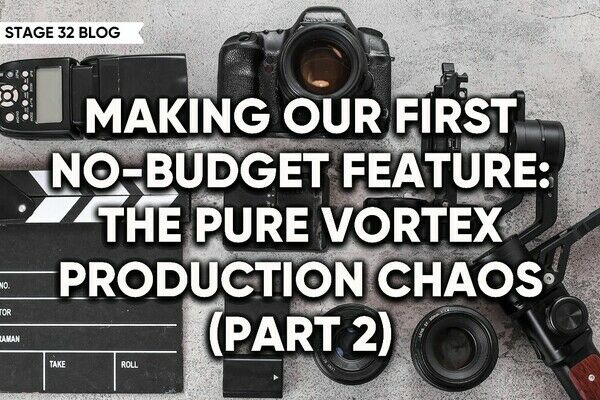
Making Our First No-Budget Feature: The Pure Vortex Production Chaos (Part 2)
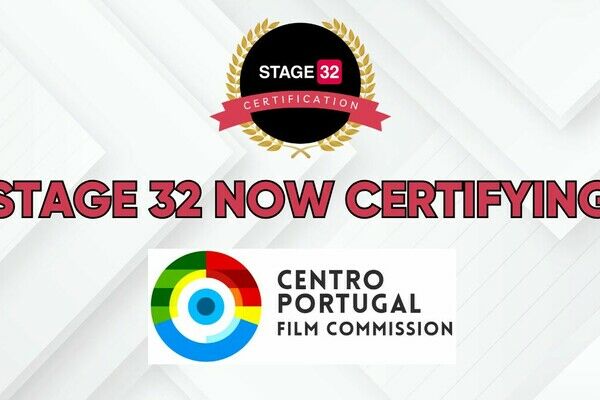
Stage 32 Now Certifying Centro de Portugal Film Commission!
